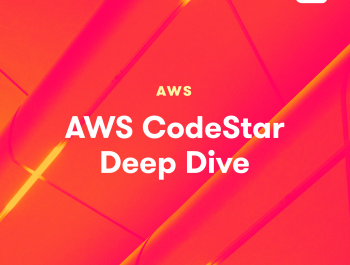
Description
Rocky Linux Server: An Alternative to Red Hat
Introduction
1. Introduction
Provides an overview of the course and outlines the learning objectives.
2. What is a computer server?
Explains the concept of a computer server, its functions, and its significance in various environments.
3. What is Linux?
Describes Linux, including its history, core features, and its role in the server ecosystem.
4. Rocky Linux: An Alternative to Red Hat
Introduces Rocky Linux, highlighting its development as a community-driven alternative to Red Hat Enterprise Linux (RHEL).
5. Downloading Rocky Linux 9
Guides on how to download the latest version of Rocky Linux 9, including verification of the downloaded files.
6. Virtualbox install
Provides step-by-step instructions for installing VirtualBox, a popular virtualization software.
7. Installing Rocky Linux 9 Server
Detailed procedure for installing Rocky Linux 9 on a server, including initial configuration steps.
Command Line Fundamentals
8. Navigating the system (ls, cd)
Teaches how to navigate the file system using basic commands such as ls and cd.
9. Working with directories and files (mkdir, rmdir, nano, rm)
Covers commands for creating, deleting, and editing directories and files, including mkdir, rmdir, nano, and rm.
10. Basic output (cat, TAB, &&, “”, )
Explains how to display file contents and use command-line shortcuts and operators like cat, TAB completion, &&, “”, and \.
11. Security basics (sudo)
Introduces the sudo command for executing commands with superuser privileges and includes practical exercises.
12. Managing output (|, grep, less)
Demonstrates how to manage and filter command output using pipes (|), grep, and less.
13. Copying and moving files (cp, mv, rsync)
Shows how to copy and move files using cp, mv, and rsync, including practical examples.
14. Shutting down the system (reboot, shutdown)
Details the commands for safely rebooting and shutting down the system.
15. Additional content: Runlevels (telinit)
Explores system runlevels and how to change them using the telinit command.
16. The ‘sudoers’ file
Explains how to configure the sudoers file to manage user privileges.
17. More learning: HELP!
Provides resources and commands for getting help within Rocky Linux, such as man, info, and online documentation.
User Management and Permissions
18. Changing the system date and time
Guides on how to change and configure the system date and time.
19. User management, part 1 (useradd, groupadd, passwd)
Covers the basics of user management, including adding users and groups with useradd, groupadd, and setting passwords with passwd.
20. User management, part 2 (userdel, groupdel, usermod)
Continues user management with commands for deleting users and groups (userdel, groupdel) and modifying user accounts (usermod).
21. Package management and understanding dependencies (dnf)
Explains how to manage software packages and their dependencies using the dnf package manager.
22. Basic Networking, Part 1
Introduces basic networking concepts, including configuring network interfaces.
23. Basic Networking, Part 2
Continues with more advanced networking topics, such as network troubleshooting and configuration.
24. Additional Network lesson
Provides additional networking content and advanced configurations.
25. Permissions, Part 1
Covers the basics of file and directory permissions, including how to read and set them.
26. Permissions, Part 2
Continues with advanced permission topics, such as special permissions (setuid, setgid, sticky bit).
27. Additional content: Managing Permissions with ACLs
Introduces Access Control Lists (ACLs) for more granular permission management.
Filesystem and Storage Management
28. Filesystem Management, Part 1
Explains how to manage filesystems, including mounting and unmounting.
29. Filesystem Management, Part 2
Covers advanced filesystem management tasks such as resizing and creating filesystems.
Advanced Administration
30. An Introduction to RAID
Provides an overview of RAID technology and its benefits.
31. Forming a RAID array
Step-by-step guide on creating a RAID array.
32. Replacing a failed disk in a RAID array
Explains how to identify and replace a failed disk in a RAID array.
33. Destroying an array
Instructions on safely dismantling a RAID array.
34. Samba: Preliminary configuration
Introduces Samba and covers its initial configuration.
35. Samba: Working with shares
Guides on setting up and managing file shares with Samba.
36. Using SSH to remote connect to the server
Explains how to use SSH for secure remote connections to the server.
37. Setting up and using the Apache Web Server
Provides instructions for installing and configuring the Apache Web Server.
38. Automating tasks with cron jobs
Covers how to schedule and manage automated tasks using cron.
Additional Tools
39. Browsing the web with ‘links’
Shows how to use the links command-line web browser.
40. GUI management with Cockpit
Introduces Cockpit for web-based GUI management of Rocky Linux.
41. Process management (ps, top, fg, kill)
Teaches how to monitor and manage system processes using ps, top, fg, and kill.
42. Using WinSCP for FTP access
Explains how to use WinSCP for file transfers between Windows and Rocky Linux.
This comprehensive program covers various aspects of Rocky Linux Server administration, providing both fundamental and advanced knowledge.
Who this course is for:
- IT Professionals and System Administrators: Those seeking to enhance their skills in Linux server administration, whether to expand their existing skill set or to migrate to a Rocky Linux-based environment.
- Computer Science and Technology Students: University students or those from similar educational institutions who want to gain practical knowledge in Linux server administration as part of their academic training or to prepare for future careers in information technology.
- Technology Enthusiasts and Self-Learners: Individuals passionate about technology who want to explore the world of Linux servers and learn how to configure and manage their own servers for personal projects, web development, or any other purpose.
- Career Transitioners: Those considering a career change to the field of information technology and aiming to start with a solid foundation in Linux server administration.
- Linux Beginners: People with no prior experience in Linux who want to learn from scratch about server administration using a popular distribution like Rocky Linux.
Requirements
- Basic Computer Skills: Students should have a general understanding of how to use a computer, including basic file management and familiarity with common software applications.
- Understanding of Operating Systems: While not mandatory, a basic understanding of operating systems, such as Windows or macOS, would be beneficial for grasping Linux concepts more easily.
- Access to a Computer: Students will need access to a computer with internet connectivity to download Rocky Linux and follow along with the course exercises.
- Virtualization Software (Optional): For students who want to practice installing Rocky Linux in a virtual environment, having virtualization software like VirtualBox installed on their computer would be helpful. However, this is optional, as students can also install Rocky Linux on physical hardware if available.
- Curiosity and Eagerness to Learn: Most importantly, students should come to the course with a willingness to learn and explore new concepts in Linux server administration. No prior experience with Linux is required, but a positive attitude towards learning is essential for success in the course.
Last Updated 5/2024
Download Links
Direct Download
Rocky Linux Server: An Alternative to Red Hat.zip (2.9 GB) | Mirror


